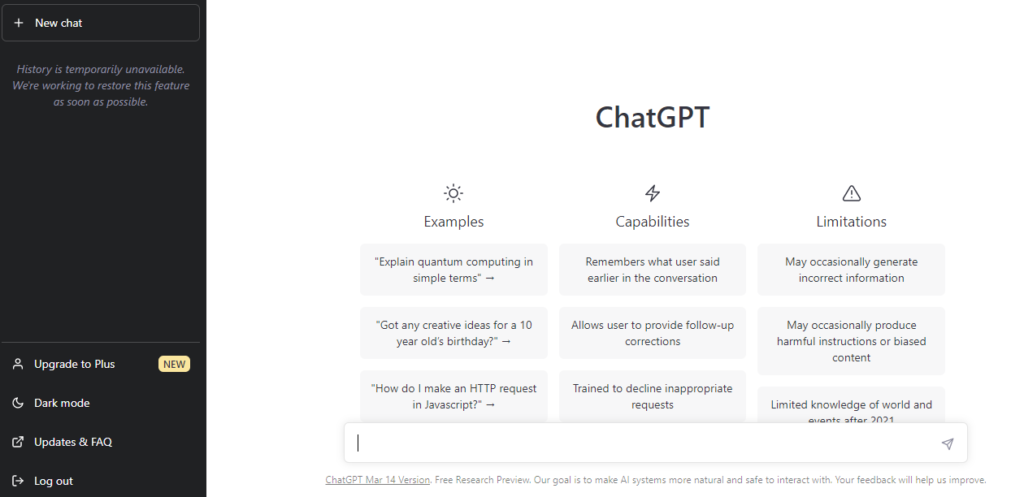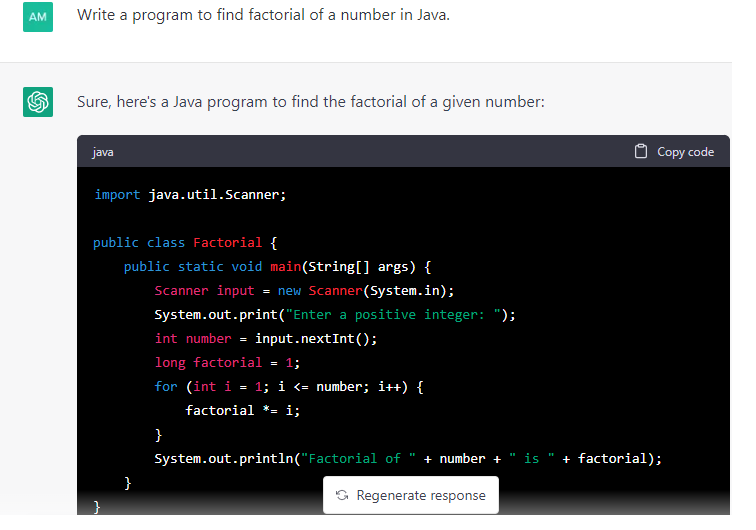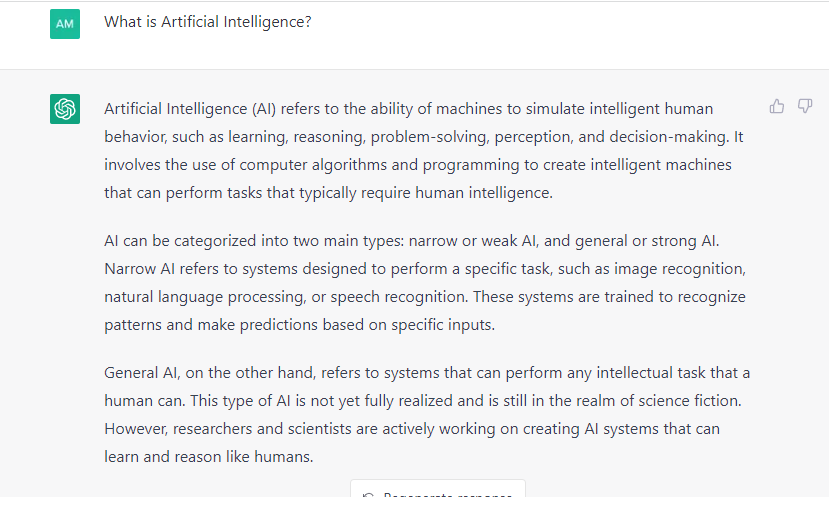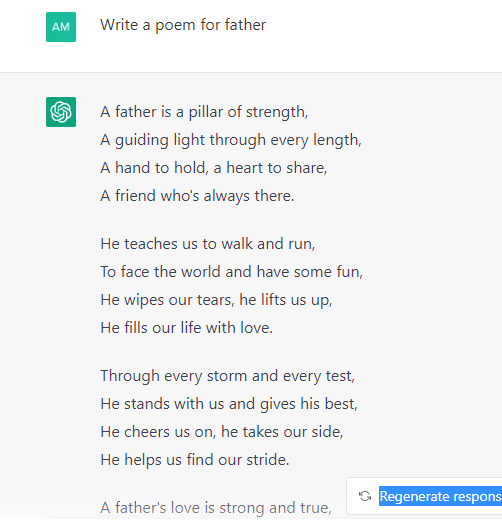In this article I will explain what ChatGPT is and how it will improve the automation technique in Aritficial Intelligence.
Artificial intelligence (AI) refers to the simulation of human intelligence in machines that are programmed to think and learn like humans. It encompasses a wide range of technologies and techniques, such as machine learning, natural language processing, and computer vision, that enable machines to perform tasks that typically require human intelligence, such as understanding natural language, recognizing images, and making decisions. AI systems can be applied in various fields, such as healthcare, finance, transportation, and entertainment, to improve efficiency, accuracy, and decision-making. AI is becoming more advanced and sophisticated, and is expected to play an increasingly important role in shaping the future of our society.
OpenAI is a research non-profit organization that aims to promote and develop friendly Artificial Intelligence (AI) such as machine learning, computer vision, and natural language processing in a responsible manner. It was founded in December 2015 by Elon Musk, Sam Altman, Greg Brockman, Ilya Sutskever, and Wojciech Zaremba. Its mission and focus on responsible AI development has made it a major player in shaping the future of AI.
Natural language processing (NLP) is a rapidly evolving field that aims to enable computers to understand and process human language.
ChatGPT is a cutting-edge natural language processing (NLP) model developed by OpenAI. It is a variant of the GPT (Generative Pre-training Transformer) model, which has been trained on a massive dataset of text from the internet. This allows ChatGPT to generate human-like text, making it a powerful tool for various NLP tasks such as language translation, text summarization, and even writing creative fiction.

One of the most significant advantages of ChatGPT is its ability to understand context. When given a prompt, the model is able to generate text that is not only grammatically correct but also semantically meaningful. This makes it an ideal tool for chatbots and virtual assistants, as it can understand and respond to user queries in a natural and conversational manner.
Another use case of ChatGPT is in the field of language translation. With the ability to understand context and generate grammatically correct text, the model can be trained on parallel text data in multiple languages to accurately translate text from one language to another. This can greatly reduce the cost and time required for human translators, and could potentially lead to more accurate translations.

In the field of text summarization, ChatGPT can be used to generate a concise summary of a given text. This can be useful for news articles, research papers, and other long-form text where it is essential to extract the main ideas quickly. This can save people time and effort when trying to get the main point of a text.

ChatGPT can also be used to generate creative fiction. By providing a prompt, the model can generate a story or poem, giving authors and writers a tool to generate new ideas and inspiration. This can be a powerful tool for authors, helping them to generate new ideas and inspiration.

High-quality text generation: ChatGPT has been trained on a vast amount of text data, which allows it to generate human-like text that is grammatically correct and semantically meaningful.
Flexibility: ChatGPT can be fine-tuned for various NLP tasks, such as question answering, text classification, and named entity recognition.
Continuous learning: ChatGPT can continuously learn from new text data, which allows it to improve its performance over time. ChatGPT can be fine-tuned for text classification tasks, such as sentiment analysis and topic classification.
Named entity recognition: ChatGPT can be fine-tuned for named entity recognition tasks, where it can identify and classify named entities, such as people, organizations, and locations.
Dialogue systems: ChatGPT can be used in dialogue systems, where it can generate human-like text in response to user inputs, making the conversation more natural and human-like.
Question answering: ChatGPT can be fine-tuned for question answering tasks, where it can understand a question and generate a grammatically and semantically correct answer. Content generation: ChatGPT can be used to generate creative fiction, such as stories and poems, and also to generate product descriptions, headlines, and other types of marketing content.
The ChatGPT has following capabilities.
Remembers what user said earlier in the conversation
Allows user to provide follow-up corrections
Trained to decline inappropriate requests
Limitations of ChatGPT
May occasionally generate incorrect information
May occasionally produce harmful instructions or biased content
Limited knowledge of world and events after 2021.
ChatGPT is a large language model that has been trained on a diverse set of text data, but it does have some limitations. One limitation is that it is based on patterns it has seen in the training data, so it may not be able to generate entirely novel and coherent responses to certain prompts, particularly those it hasn’t seen before. Additionally, it may produce biased or inaccurate responses, particularly when it comes to sensitive topics such as race or politics, if the training data contains such biases. Finally, it may have difficulty understanding and responding to certain types of questions, such as those that require mathematical or programming knowledge.
In conclusion, ChatGPT is a powerful NLP model that has many potential use cases. Its ability to understand context and generate human-like text makes it an ideal tool for chatbots, virtual assistants, language translation, text summarization and creative writing. As the field of NLP continues to evolve, we can expect to see ChatGPT and similar models playing a significant role in shaping the future of human-computer interaction. With its potential to automate many tasks that currently require human input and its ability to understand context, ChatGPT is a model to watch in the coming years.
